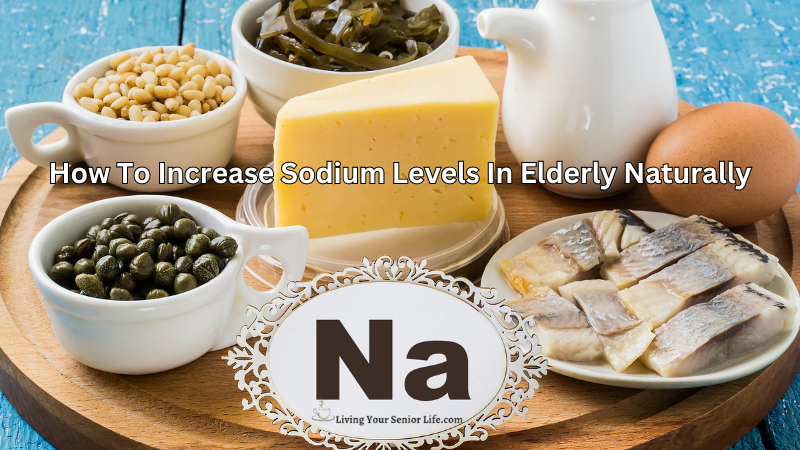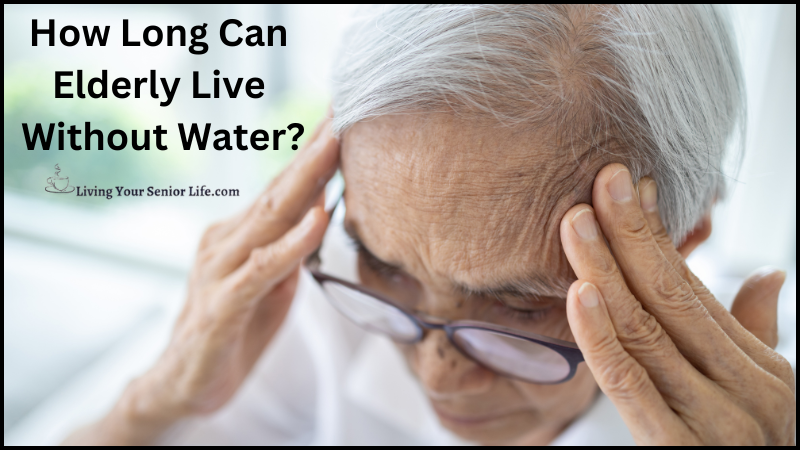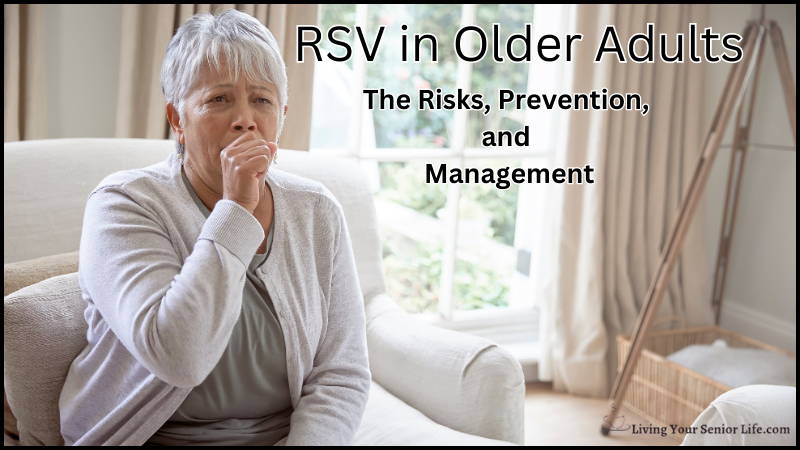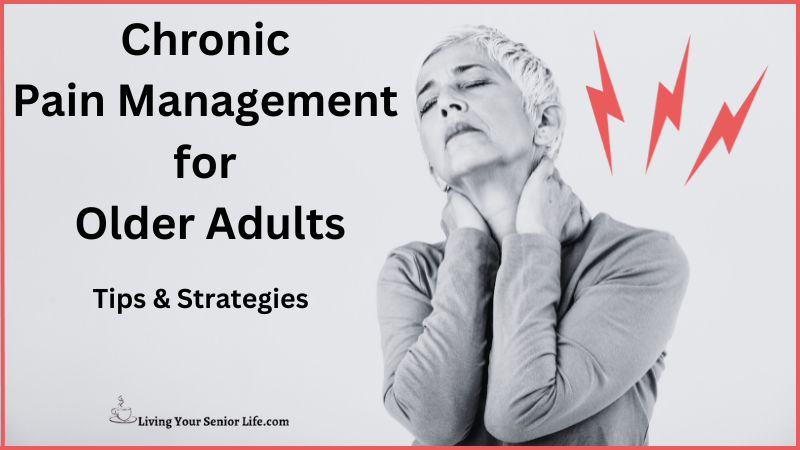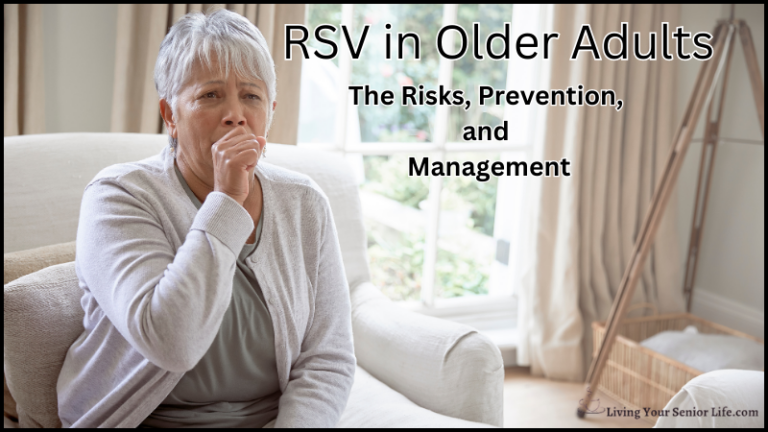This post is for informational purposes only and should not be used in place of the advice of a medical professional.
In this article, we will look at how to increase sodium levels in elderly naturally, as well as, explore other topics relevant to sodium levels. Sodium plays a pivotal role in maintaining the health of elderly people. It is an essential mineral that helps regulate body fluids, blood volume, and blood pressure. However, older adults are at a higher risk of developing health issues associated with both high and low sodium levels.
Seeking advice from a healthcare provider to better understand individual dietary needs and to use urine tests and blood tests as tools for monitoring sodium levels is advisable. Remember, maintaining sodium levels is a balancing act that requires a combination of dietary changes, recognition of symptoms, and awareness of how much salt and water should be consumed.
Key Takeaways:
- Proper sodium levels are vital for fluid balance and preventing health complications in elderly people.
- Dietary inclusion of sodium-rich foods and managing water intake help maintain normal sodium levels.
- Consultation with healthcare providers for personalized advice on managing sodium is essential.
Video: How To Increase Sodium Levels In Elderly Naturally
Natural Approaches to Prevent Low Sodium
To maintain normal sodium levels and avoid health complications such as dehydration, confusion, and more severe cases that can lead to death, it’s critical for elderly people to take proactive steps toward managing their sodium intake and overall hydration.
Dietary Changes:
A healthy diet is fundamental for maintaining electrolyte balance, including sodium levels. It’s important for older adults to consume enough sodium through their diet. Including sodium-rich foods like cottage cheese, chicken breasts, and fresh meat can help maintain adequate blood sodium levels. Care should be taken not to exceed the recommended amount of sodium, as too much salt can lead to high blood pressure and heart disease.
Adjusting your diet is key to managing sodium levels. Specific changes can help increase low sodium levels in elderly people naturally, without the need for medical treatment.
Foods High in Sodium
To naturally boost sodium levels, incorporate sodium-rich foods into your diet. These include:
- Cheese: Options like cottage cheese not only add flavor but also provide a good amount of sodium.
- Seafood: Many types of seafood, including shellfish, are naturally high in sodium.
- Salted nuts: A handful of these can help increase your sodium intake.
Eating these foods can help elevate the blood sodium level, which is crucial for maintaining fluid balance and proper muscle and nerve functions.
Physical Activity: Regular physical activity can help regulate body fluids and blood volume, which is linked to sodium balance. However, during activities that cause a lot of sweat, it’s essential to replace the lost fluids and salt.
Adequate Hydration: Drinking enough water is important; however, too much water can dilute the concentration of sodium in your body, leading to hyponatremia. It is important for older adults to balance their water intake with their sodium intake, ensuring they consume enough water to stay hydrated without over-diluting their bodily fluids.
Sensible Salt Intake: While too much salt can lead to health issues, utilizing salt sensibly in your diet is an easy home remedy for preventing low levels of sodium. A teaspoon of salt can be added to meal preparations, but always keep a check on the total salt consumption to avoid excess.
Remember, an individualized approach is needed for each person, especially if there are underlying medical conditions or medications that affect sodium balance. Consulting a healthcare provider is recommended for a personalized plan.
Recognizing the Signs of Low Sodium
It is critical for elderly people to be aware of the symptoms of low sodium levels, as these symptoms can indicate that their health is at risk due to hyponatremia. Prompt identification of these signs can lead to effective management and prevention of serious health complications.
Hyponatremia, a condition reflecting low levels of sodium in the blood, can lead to symptoms such as muscle cramps, and loss of energy, and in severe cases, it may result in complications like heart attacks or congestive heart failure. Therefore, it’s crucial to monitor and manage sodium intake to keep it within the normal range, particularly in elderly individuals who may have underlying medical conditions or be taking medications that affect sodium balances.
Symptoms of Hyponatremia
Common symptoms of hyponatremia include:
- Nausea and vomiting can significantly impact your dietary intake and further exacerbate sodium depletion.
- A headache or confusion can affect your ability to think clearly or perform daily tasks.
- General weakness or fatigue could hinder your mobility and physical activity.
- More severe symptoms might encompass muscle cramps and increased muscle weakness which are often due to an imbalance in body fluids and essential electrolyte levels.
- If you feel an uncharacteristic sense of lethargy or notice any loss of energy, these could be further indicators of low blood sodium.
Complications of Prolonged Low Sodium Levels
For elderly persons, not having enough sodium in your diet, or the medical condition of chronic hyponatremia, can lead to severe, life-threatening complications if not addressed, such as:
- Acute hyponatremia: This is a more rapid decrease in sodium levels, which might cause seizures or coma due to the swift change affecting your brain and other organs.
- In severe cases, continued low sodium can disrupt the normal range of sodium concentrations necessary for fluid balance and electrolyte balance, leading to exacerbated health issues including heart disease and congestive heart failure.
- Persistent insufficient sodium intake can also contribute to chronic kidney disease, adversely affect your blood volume, and put a strain on your blood vessels.
Remember, if you suspect any symptoms of low blood sodium or experience ongoing health problems, consult with your healthcare provider. A simple blood test or urine test might be done to confirm your blood sodium level and guide medical treatment.
Maintaining Proper Hydration

Maintaining proper hydration is crucial for older adults, especially when there’s a need to increase sodium levels naturally. The human body needs a precise balance of sodium and water to function efficiently, which can be a sensitive equilibrium in elderly people due to their susceptibility to health problems.
Dehydration can lead to a decrease in blood volume, affecting blood pressure and potentially worsening heart conditions. On the flip side, drinking too much water can dilute body fluids, causing low levels of sodium or hyponatremia, which can trigger muscle cramps and in severe cases, more serious health issues.
To maintain healthy sodium levels, it’s important to manage fluid intake properly:
- Water Intake: Aim for a balanced amount of water consumption. While individual needs vary, a general guideline is to drink when you’re thirsty and to sufficiently hydrate before and after physical activity.
- Monitor Sodium Intake: Too much salt can increase the risk for high blood pressure and heart disease, but not enough sodium could lead to symptoms of low sodium levels such as loss of energy and concentration difficulties.
- Food Choices: Consume sodium-rich foods in moderation, such as dairy products and salty condiments like soy sauce. Opt for fresh meat and fresh fruit to limit salt intake.
- Read Labels: Pay attention to sodium content on labels, especially with packaged and restaurant foods, where salt content can be high.
If managing your amount of fluid and sodium consumption through diet and hydration becomes challenging, consult your healthcare provider for advice tailored to your medical history and current health conditions. They may suggest a blood test or urine tests to assess sodium concentrations and ensure they’re within the normal range.
Safe Use of Supplements and Medications
When adjusting sodium levels, particularly in older adults, it’s critical to consider the safe use of supplements and medications to avoid exacerbating health issues such as high blood pressure, heart disease, or chronic kidney disease.
Adjusting Medication Intake
Medications that may lower sodium levels, including certain diuretics and antidepressants, should be assessed by your healthcare provider. In some cases, the dosage may need to be modified, or an alternative treatment may be suggested. For example, tolvaptan, a medication shown to help raise blood sodium levels, should be used under medical supervision, as it can affect fluid balance and may not be suitable for everyone, especially those with underlying medical conditions.
- Review Current Medications: A thorough blood test can help determine if your medications are affecting your sodium levels.
- Consult Healthcare Providers: They can help you understand the potential impact of your current medication on your blood sodium level and may adjust your treatment plan accordingly.
Electrolyte Supplements
Mineral supplements that include sodium chloride can help increase low levels of sodium, but they must be used cautiously to maintain proper electrolyte balance and avoid health complications. It is essential to consume enough water to aid absorption but not so much that it dilutes sodium concentrations in your bloodstream.
- Sodium Supplements: Take only as directed by a healthcare provider; overuse can lead to high blood pressure and other health problems.
- Track Intake: Older adults should monitor their sodium intake ensuring it stays within the normal range.
Avoid overconsumption of water, which can exacerbate hyponatremia, and remember, maintaining a healthy diet with sodium-rich foods can be natural ways to help adjust your body’s sodium level. Always work with your healthcare provider to manage your condition safely.
More About Sodium and Understanding Sodium’s Role in the Body
Sodium is an essential electrolyte that plays a pivotal role in maintaining fluid balance within your body. It helps regulate blood pressure and is crucial for the proper function of both muscle and nerve cells.
Blood sodium levels are typically maintained within a normal range to ensure good health. For older adults, managing sodium intake is particularly important, as both high and low levels can lead to health problems.
- High blood pressure can result from consuming too much salt. An average teaspoon of salt contains about 2,300 mg of sodium.
- Heart disease and heart attacks are potential risks associated with both too much sodium and too much water intake, disrupting the delicate balance necessary for healthy heart function.
In the case of low levels of sodium, known as hyponatremia, symptoms can include muscle cramps, loss of energy, and, in severe cases, even confusion or coma.
It’s vital to seek a healthcare provider if you suspect an imbalance. A blood test can determine your blood sodium level. If you have too much sodium, dietary changes are often recommended. Acute hyponatremia and chronic hyponatremia often require medical treatment.
To ensure you consume enough sodium for bodily functions without risking health complications:
- Aim for a healthy diet with a natural balance of sodium-rich foods like fresh meat, dairy products, and some vegetables.
- Be mindful of sodium content in restaurant foods and processed foods like canned soups, soy sauce, and veggie burgers.
- Consider salt intake in relation to your water intake to maintain electrolyte balance.
Understanding the right amount of sodium and amount of water to consume can help prevent health issues and maintain a healthy balance within your body.
Recognizing Underlying Health Issues Possibly Affecting Sodium Levels
Addressing health problems that affect sodium levels is crucial for raising those levels safely in elderly people. It’s important to understand how various medical conditions can disrupt sodium balance and when professional medical advice is necessary.
Common Medical Conditions with Sodium Implications
Kidney disease, such as chronic kidney disease, can hinder your kidneys’ ability to manage electrolyte balance, leading to low levels of sodium. Similarly, heart disease, including congestive heart failure, can cause fluid retention, diluting blood sodium levels. Conditions such as liver cirrhosis or adrenal insufficiency further complicate sodium balance by altering body fluids and blood volume.
People with cancer, particularly types like lung cancer, may face hyponatremia due to the disease itself or as a side effect of the treatment. Pneumonia and urinary tract infections can lead to a temporary drop in sodium levels too. Less commonly, endocrine disorders like hypothyroidism may decrease your body’s sodium concentrations. Chronic conditions often have more subtle symptoms, such as mild muscle cramps or loss of energy.
When to Consult Healthcare Professionals
You should seek advice from a healthcare provider if you experience symptoms of low sodium levels like confusion, headaches, or fatigue. In severe cases, this could indicate acute hyponatremia, which is a medical emergency. Blood tests and urine tests are essential for diagnosing hyponatremia and understanding the underlying medical conditions.
If you have a medical history of conditions like heart attacks or chronic kidney disease, regular check-ups can help monitor your sodium intake and maintain electrolyte balance. For those with a propensity for health complications due to heart disease or high blood pressure, managing salt intake and being aware of the sodium content in restaurant foods becomes even more important.
Monitoring and Managing Sodium Levels
Keeping a close watch on sodium levels is crucial for elderly people, especially when they’re facing conditions such as heart disease, high blood pressure, or chronic kidney disease. Regular monitoring can help prevent complications related to both low and high levels of sodium, such as muscle cramps and loss of energy.
Home Monitoring
You can monitor your sodium intake at home by keeping a detailed food diary to track your salt consumption. Aim to consume an amount of sodium that falls within the recommended normal range to sustain good health, which is about 1,500 milligrams for older adults. Remember, common items like bread, cereal, and canned goods can have more sodium content than you might expect. Use alternatives like fresh meat, fresh fruit, and unsalted nuts to minimize your salt intake. Pay attention to how much water you drink, as too much water can dilute blood sodium levels and lead to hyponatremia, especially if you’re at higher risk due to health conditions like syndrome of inappropriate anti-diuretic hormone (SIADH).
Medical Testing
In severe cases or when symptoms of low blood sodium suggest imbalances, you should consult your doctor. They may order a blood test to gauge your blood sodium level. Medical testing at a hospital may include urine tests to check the concentration of sodium or electrolyte balance and to identify the underlying cause of abnormal levels, such as adrenal insufficiency or chronic hyponatremia. Your healthcare provider can use this information to recommend dietary changes or medical treatment, which may involve adjusting your sodium and fluid intake or addressing any underlying medical conditions.
FAQs
What foods are recommended for raising sodium levels in the elderly?
To naturally raise sodium intake, elderly people should consider incorporating sodium-rich foods into their diet. Items like cottage cheese, canned seafood, and vegetable juice are high in sodium content. Including a modest amount of table salt in meals can also help increase the amount of sodium in the diet.
Are there specific drinks that can help increase sodium intake in older adults?
Yes, there are beverages that can help older adults boost their sodium levels. Sports drinks not only provide hydration but also contain electrolytes—like sodium chloride—which are essential for maintaining the body’s fluid balance. Additionally, broth or soups with a higher salt concentration can contribute to sodium intake.
How can elderly patients recover from hyponatremia?
Recovery from hyponatremia requires medical treatment that addresses both the amount of fluid in the body and the underlying cause of the sodium imbalance. Dietary changes to increase salt intake may be recommended, and in severe cases, intravenous saline solutions might be administered under a healthcare provider’s supervision.
What is the typical recovery time for elderly patients with low sodium?
The recovery time for elderly patients with low sodium can vary widely depending on the severity of the condition and the presence of any additional health complications. Mild hyponatremia may resolve quickly with proper intervention, while chronic or acute hyponatremia may require longer-term management and monitoring through blood tests and follow-up medical care.
Additional Reading
Conclusion
In conclusion to this article, How To Increase Sodium Levels In Elderly Naturally, we have found that maintaining optimal sodium levels is crucial for the overall health and well-being of elderly individuals. With the increased risk of health issues associated with both high and low sodium levels, it is important to be mindful of sodium intake and fluid balance. By incorporating a healthy diet rich in sodium, monitoring fluid intake, and seeking guidance from healthcare providers, elderly individuals can effectively manage their sodium levels.
It is essential to recognize the symptoms of imbalanced sodium levels and take proactive measures to ensure that sodium intake remains within the normal range. With a balanced approach to dietary changes and awareness of individual needs, elderly individuals can take control of their sodium levels and promote their overall health.
Have you or someone you loved dealt with low sodium level?. What was the experience like? Please comment below.
